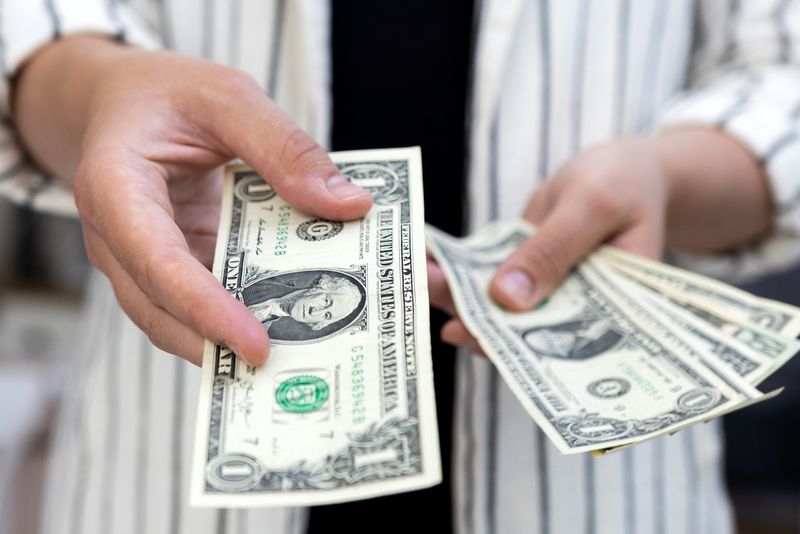(Reuters) -The U.S. dollar edged lower on Thursday after a larger than usual interest rate cut from the U.S. Federal Reserve that had been priced in by markets.
The Fed on Wednesday kicked off its monetary easing cycle with a half-percentage-point rate cut that Chair Jerome Powell said was meant to show policymakers’ commitment to sustaining a low unemployment rate now that inflation has eased.
Expectations had drifted towards a dovish outcome in the days before the decision, with money markets pricing around a 65% chance of a 50 basis point (bp) cut on Wednesday. Economists polled by Reuters were leaning towards a 25-bp cut.
“The cut appears to be a pre-emptive one with both accompanying dot plot and press conference comments highlighting more caution when it comes to the pace and magnitude of easing policy going forward,” said Salman Ahmed, global head of strategic asset allocation at Fidelity International. The Fed’s dot plot chart points to policymakers’ future rate expectations.
The dollar index, which measures the greenback against a basket of six peers, was down 0.15% to 100.71, not far from the level before the Fed decision. It slid to an over one-year low of 100.21 in the previous session.
The big news is “the trimming of growth forecasts and the sharp downward revision of the dots,” said Guy Stear, head of developed markets strategy at the Amundi Investment Institute.
“The Fed seems confident that it has won the battle against inflation, and recognizes that monetary policy is now too restrictive, especially given the threats to growth.”
Fed policymakers on Wednesday projected the benchmark interest rate would fall by another half of a percentage point by the end of this year, a full percentage point next year and half of a percentage point in 2026, though they said the outlook that far into the future was uncertain.
“That is why there was no additional U.S. dollar weakness yesterday. The dollar had already weakened in the days and weeks before,” said Ulrich Leuchtmann, head of forex and commodity research at Commerzbank (ETR:CBKG).
Some analysts expect the greenback will fall next year as the Fed keeps cutting rates.
The Australian and New Zealand dollars drew support from domestic data surprises.
Australian employment blew past forecasts for a third straight month in August while the jobless rate held steady, reinforcing the view that the labour market remains tight.
The data “should dispel thoughts of imminent easing from the Reserve Bank of Australia (RBA),” said Robert Carnell, regional head of research, Asia-Pacific, at ING.
“Until recently, there was an odd kink in the implied cash rate curve at the September meeting, indicating that some investors still believed the RBA would follow the Fed lower this month,” he added.
The Aussie was up 0.84% to $0.6819.
The kiwi, meanwhile, traded 0.50% higher at $0.6240, after data showed the New Zealand economy contracted by 0.2% in the second quarter, a bit better than the 0.4% fall expected.
Against the yen, the dollar gained as much as 1.2% to hit an intraday high of 143.95 in the Asian session. It last traded 0.10% higher at 142.15 yen.
“There was a sharp squeeze in short dollar/yen positions as markets took profit post-Fed,” said Christopher Wong, currency strategist at OCBC.
The euro rose 0.20% to $1.1140, but remained below a three-week high hit in the previous session.

Sterling was up 0.23% to $1.3243 after hitting $1.3298 in the previous session, its highest since March 2022.
That came in the wake of data on Wednesday that showed British inflation held steady in August but sped up in the services sector closely watched by the Bank of England, reinforcing bets that the central bank will keep interest rates on hold later on Thursday.
To read the full article, Click Here

